Want to know more about the Best Chemistry Schools In the US and make an informed decision? Here is a good place to start.
Chemistry is a field of study that has the power to change our world in countless ways. From developing new medicines to improving energy sources and finding new materials, the impact of chemistry is far-reaching and undeniable.
That’s why pursuing a degree in chemistry can be such a rewarding experience. But with so many universities offering programs in chemistry, how do you know which one is right for you?
In this blog post, we’ll be taking a closer look at some of the best chemistry schools in the US. Our list will give you a glimpse into the elements that make up the best chemistry programs.
Please note that schools are selected based on our criteria (at the end of the article), ranked by the latest acceptance rate.
Table of Contents
#25. University of Wisconsin–Madison


- Acceptance rate: 60.4%
- Average entry score: 1300-1480 SAT or 28-32 ACT
- Student-to-faculty ratio: 18:1
- Estimated cost of attendance (tuition and fees): $27,484-$55,372
- Average earning potential for graduates (with doctorates): $63,200 (College Factual)
UW-Madison’s College of Letters and Science is home to the Department of Chemistry. As one of the top chemistry schools in the country, UW-Madison offers a wide variety of undergraduate and graduate programs in chemistry.
The department is known for its research-intensive environment, fostering creativity and innovation among faculty and students. Students enjoy access to top-notch facilities and experienced faculty who are committed to mentoring students.
With such a strong reputation, it is no surprise that the College of Letters and Science has produced more than 100 scholars.
#24. University of Illinois at Urbana-Champaign


- Acceptance rate: 59.7%
- Average entry score: 1210-1470 SAT or 27-33 ACT
- Student-to-faculty ratio: 21:1
- Estimated cost of attendance (tuition and fees): $33,060-$50,510
- Average earning potential for graduates: $39,700 (College Factual)
The University of Illinois at Urbana-Champaign is well-recognized for its strong chemistry program that blends theoretical and experimental research. With a long history of chemistry research, the university has earned several awards for its contributions to academia.
Students enjoy excellent facilities, including a state-of-the-art laboratory on campus that features a wide range of instruments and equipment. This allows students to gain hands-on experience with the latest technology in chemistry.
Graduates of the chemistry program are well-prepared to pursue careers in academia and industry. Employers prefer chemistry graduates with experience working in a laboratory. Students who do not have these experiences will be at a disadvantage when looking for jobs after graduation.
#23. University of Washington


- Acceptance rate: 53.5%
- Average entry score: 1220-1470 SAT or 29-34 ACT
- Student-to-faculty ratio: 9:1
- Estimated cost of attendance (tuition and fees): $30,640-$58,470
- Average earning potential for graduates: $38,920 (Glassdoor)
The Department of Chemistry at the University of Washington integrates technology and chemistry to provide students with a broad and deep curriculum. Students learn how to apply their knowledge outside the classroom through research opportunities, internships, and study abroad programs.
At the University of Washington, undergraduate students can pursue a degree in chemistry or biochemistry. Both programs are designed to provide students with the knowledge and skills necessary for success in their future careers. The department also offers graduate chemistry degrees in applied chemical science and technology.
#22. University of California–San Diego

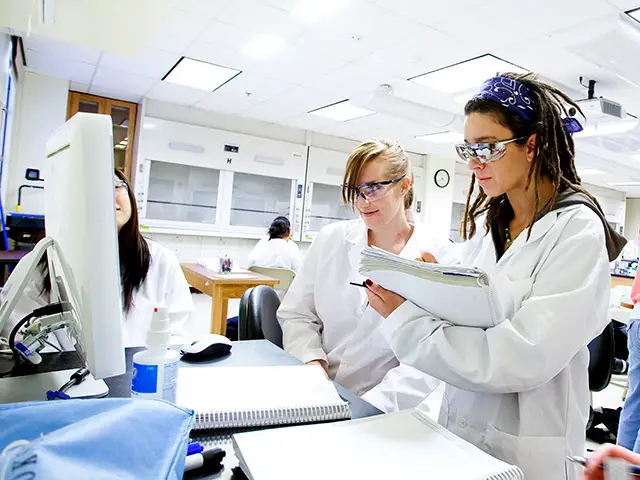
- Acceptance rate: 34.2%
- Average entry score: 1270-1480 SAT or 28-34 ACT
- Student-to-faculty ratio: 12:1
- Estimated cost of attendance (tuition and fees): $36,061-$65,835
- Average earning potential for graduates: $38,818 (Glassdoor)
UCSD’s chemistry programs give students a comprehensive, in-depth understanding of all aspects of science. This institution is a leader in the field, offering students the opportunity to learn from some of the most esteemed professors in chemistry.
Although UCSD’s undergraduate degree programs are strong, the graduate programs really set this university apart. Graduate students take advantage of the many research opportunities available at UCSD and the close proximity of other top-tier institutions in the area.
The university’s location in sunny San Diego is another reason to apply. Students can enjoy the beautiful weather while studying at this institution. It boasts one of the most attractive campuses in California.
Similar articles like this:
- 25 Best Dental Schools In The US
- 25 Best Schools For Geology In The US
- 25 Best Schools For Marine Biology In The US
#21. University of Texas–Austin


- Acceptance rate: 32%
- Average entry score: 1230-1500 SAT or 29-34 ACT
- Student-to-faculty ratio: 16:1
- Estimated cost of attendance (tuition and fees): $28,928-$57,512
- Average earning potential for graduates: $38,100 (College Factual)
This center of excellence for chemistry research and education offers many opportunities for students to explore their interests in the field. The chemistry department at UT Austin is home to more than 60 faculty members committed to teaching and research. They specialize in inorganic, organic, physical, and analytical chemistry.
Students in UT Austin’s chemistry program have many opportunities to get involved with research. The department offers students the chance to work on research projects with faculty members of their choice. Students also participate in research groups to learn how to work in teams and conduct research.
#20. University of California–Irvine

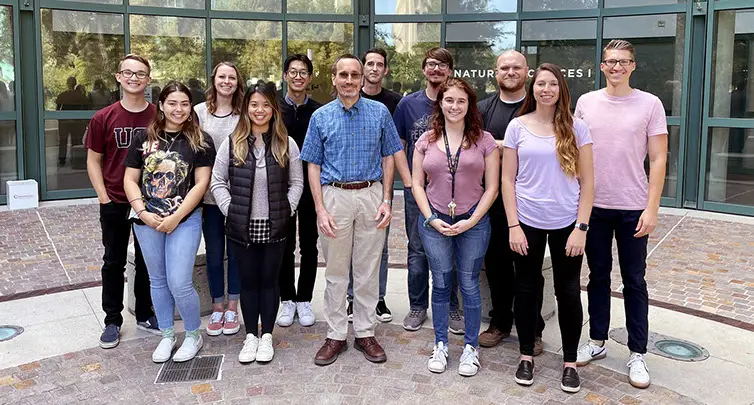
- Acceptance rate: 28.8%
- Average entry score: 1230-1430 SAT or 26-33 ACT
- Student-to-faculty ratio: 18:1
- Estimated cost of attendance (tuition and fees): $34,161-$63,915
- Average earning potential for graduates: $31,700 (College Simply)
The Department of Chemistry at UC Irvine is committed to providing its students with a rich academic environment. With large lecture halls and small discussion sections, the department offers an intimate learning experience that allows students to interact with their professors and peers.
UC Irvine offers several concentrations and tracks to prepare students for careers in chemistry. This includes chemical physics, computational chemistry, synthesis, and biochemistry. Chemistry students at UC Irvine have access to state-of-the-art instrumentation and research facilities.
#19. Purdue University–West Lafayette


- Acceptance rate: 25%
- Average entry score: 1267 SAT
- Student-to-faculty ratio: 14:1
- Estimated cost of attendance (tuition and fees): $24,390-$50,000
- Average earning potential for graduates: $46,937 (Glassdoor)
Purdue University is one of the nation’s most respected public research universities. The chemistry department at Purdue has a rich history of academic and research accomplishments.
Students at Purdue University’s Department of Chemistry enjoy the benefits of a small-class environment with professors who are actively engaged in research.
They also enjoy access to state-of-the-art facilities and laboratories. This allows students to learn how to apply the knowledge they gain in their classes. The department also provides its students with ample opportunities for research and career development.
#18. University of North Carolina–Chapel Hill

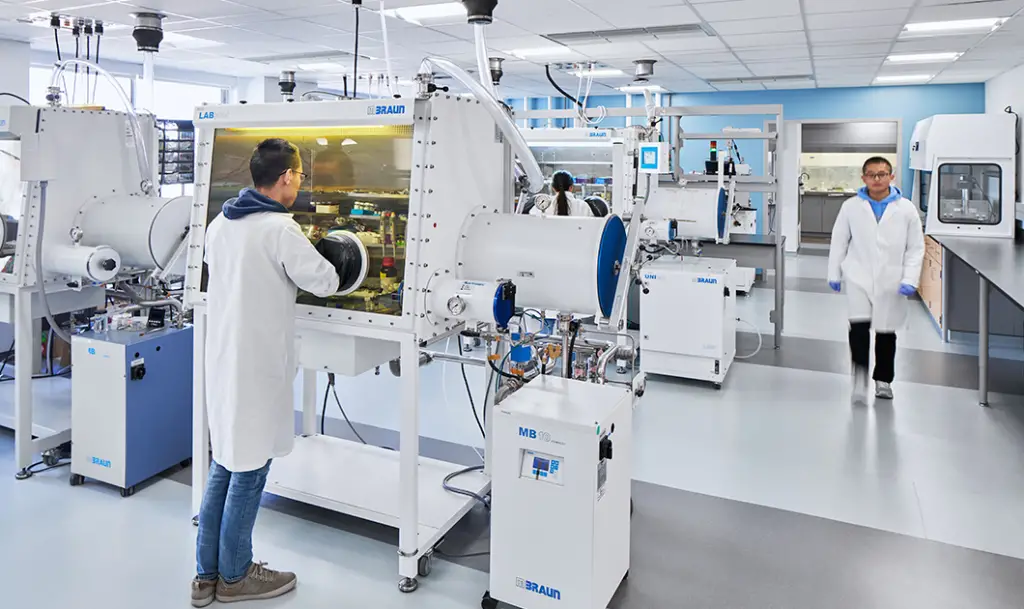
- Acceptance rate: 20.4%
- Average entry score: 1310-1500 SAT or 29-33 ACT
- Student-to-faculty ratio: 13:1
- Estimated cost of attendance (tuition and fees): $24,546-$51,725
- Average earning potential for graduates: $33,600(College Factual)
The University of North Carolina at Chapel Hill offers a personalized chemistry education emphasizing theory and practice. Students learn in a challenging environment that fosters creativity.
Therefore, students leave the university with a strong foundation in chemistry and an understanding of how it is used in their future careers.
These programs are tailored to fit the needs of incoming freshmen, transfer students, and current chemistry majors. UNC-Chapel Hill is undoubtedly one of the best chemistry schools in the United States.
Similar articles like this:
- 25 Best Schools For Agricultural Sciences In The US
- 25 Best Schools For Renewable Energy Degrees In The US
- 25 Best Engineering Schools In The US
#17. University of Michigan–Ann Arbor


- Acceptance rate: 20.2%
- Average entry score: 1360-1530 SAT or 31-34 ACT
- Student-to-faculty ratio: 15:1
- Estimated cost of attendance (tuition and fees): $32,272-$69,326
- Average earning potential for graduates (with doctorates): $58,200 (College Simply)
The chemistry major at the University of Michigan, Ann Arbor, is designed to provide you with a thorough and broad-based education in chemistry. This flexible major allows students to focus on various chemistry disciplines.
The University of Michigan boasts a close-knit community and a rich history, which contributes to its strong chemistry department. Students make the most of their time on campus by taking advantage of all its resources. This way, you can develop your scientific skills, as well as your interpersonal and communication abilities.
#16. Georgia Institute of Technology
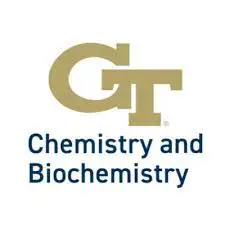
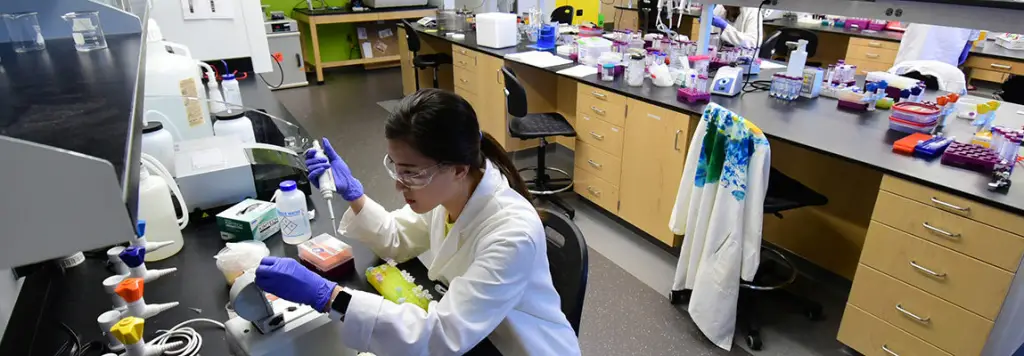
- Acceptance rate: 16%
- Average entry score: 1390 SAT
- Student-to-faculty ratio: 21:1
- Estimated cost of attendance (tuition and fees): $31,898-$53,010
- Average earning potential for graduates: $39,198 (Glassdoor)
Georgia Tech’s close-knit community and large, diverse student body make it easy to form friendships—and study groups. The campus is also beautifully maintained and well-organized. Students say they enjoy the campus’ many amenities.
Georgia Tech’s chemistry major focuses on developing analytical skills that will help you prepare for careers in medicine or other science-related fields like pharmaceuticals or nanotechnology. Students say they enjoy the small class sizes and highly-qualified professors.
#15. University of California–Berkeley


- Acceptance rate: 14.4%
- Average entry score: 1415 SAT
- Student-to-faculty ratio: 17:1
- Estimated cost of attendance (tuition and fees): $41,878-$71,632
- Average earning potential for graduates: $39,800 (College Factual)
The University of California, Berkeley, offers a B.A and B.S. in chemistry. These programs equip students with a solid understanding of the fundamentals of chemistry. Students can also choose to focus on biochemistry or chemical biology as part of their degree.
Besides a conducive learning environment, the school offers many opportunities for students to participate in research projects with faculty members.
Modern facilities ensure that students have access to the latest equipment and technology. This helps them learn new skills and gain experience in the field.
What’s it like to study chemistry at the University of California, Berkeley?
#14. Ohio State University


- Acceptance rate: 13%
- Average entry score: 1210-1430 SAT or 26-32 ACT
- Student-to-faculty ratio: 18:1
- Estimated cost of attendance (tuition and fees): $29,368-$52,451
- Average earning potential for graduates: $42,500 (College Simply)
OSU’s strength in the sciences and focus on interdisciplinary studies have made it a well-known university. The Department of Chemistry and Biochemistry offers a wide range of undergraduate and graduate degrees.
These programs prepare students for various careers in chemistry and biochemistry, including scientific research, education, medicine, and industry.
Backed by a long history of excellence and close ties to the scientific community, Ohio State University is well-positioned to provide students with an excellent education in chemistry. Graduates from the university have pursued careers in medicine, biology, education, environmental science, and technology.
Similar articles like this:
- 25 Best Forestry Schools In The US
- 25 Best Schools For Environmental Science In The US
- 25 Best Schools For Health Sciences Degrees In The US
#13. Cornell University

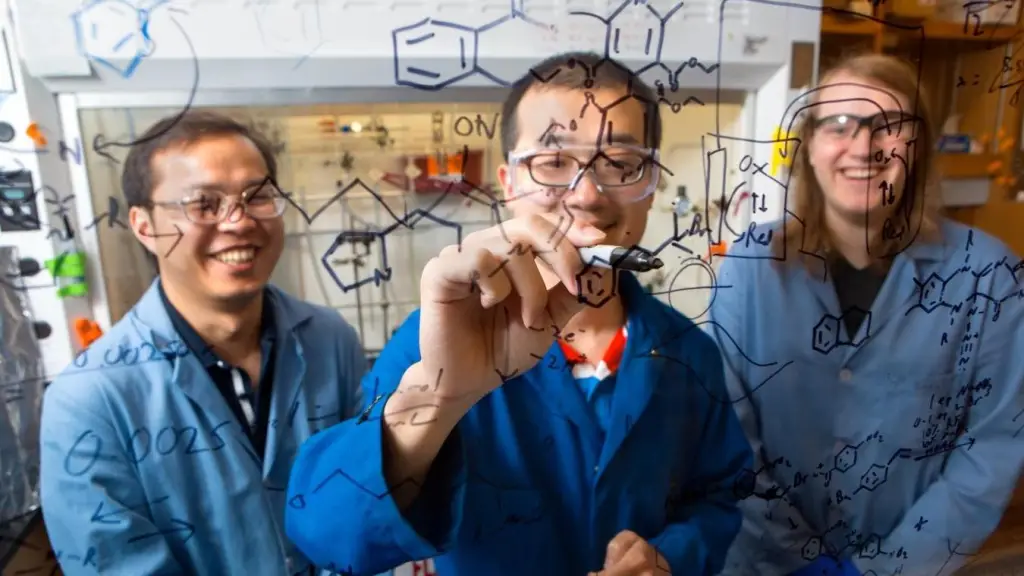
- Acceptance rate: 11%
- Average entry score: 1450-1560 SAT or 33-35 ACT
- Student-to-faculty ratio: 9:1
- Estimated cost of attendance (tuition and fees): $78,992
- Average earning potential for graduates: $31,000 (College Simply)
While Cornell University is best known for its engineering and business programs, it also has a strong chemistry program. The university offers a four-year bachelor’s degree in chemistry, as well as a master’s degree and doctorate.
At Cornell University, chemistry majors take courses that are tailored to their interests, allowing them to gain a deep understanding of the subject. The university also has a strong research program, with many chemistry professors working on projects that the National Science Foundation funds.
Cornell University is an excellent choice for students who want to attend a large, well-respected university while still pursuing their passion for chemistry.
#12. Johns Hopkins University


- Acceptance rate: 7.5%
- Average entry score: 1510-1570 SAT or 34-35 ACT
- Student-to-faculty ratio: 7:1
- Estimated cost of attendance (tuition and fees): $78,657
- Average earning potential for graduates: $15,500 (Grad Reports)
Johns Hopkins University’s academic reputation is well-deserved, thanks to its many prestigious graduate programs renowned for their innovative teaching methods and high standards.
For undergrads, JHU offers plenty of opportunities to get involved in research early on in your college career. If you’re not into research, there are still plenty of other ways to make an impact.
The Department of Chemistry employs an interdisciplinary approach to teaching and research. You’re likely to be exposed to a wide variety of topics. JHU’s internationally-recognized faculty also have a reputation for being highly accessible and approachable.
#11. Northwestern University


- Acceptance rate: 7%
- Average entry score: 1440-1550 SAT or 33-35 ACT
- Student-to-faculty ratio: 6:1
- Estimated cost of attendance (tuition and fees): $62,391
- Average earning potential for graduates (with doctorates): $89,400 (College Factual)
Northwestern University’s Chemistry Department offers an excellent undergraduate experience. The department has a strong commitment to teaching and mentoring students. It has a strong record of placing students in top graduate programs and jobs.
Northwestern’s chemistry department also boasts state-of-the-art facilities and opportunities for research, study abroad, internships, and career placement.
This school also offers career placement services, tutoring, academic support, and a strong emphasis on undergraduate research. Therefore, students will receive a well-rounded and high-quality chemistry education at Northwestern.
What’s it like to study chemistry at Northwestern University?
#10. University of Chicago


- Acceptance rate: 6.5%
- Average entry score: 1510-1580 SAT or 33-35 ACT
- Student-to-faculty ratio: 5:1
- Estimated cost of attendance (tuition and fees): $85,536
- Average earning potential for graduates: $36,403 (College Factual)
The University of Chicago is another institution in Illinois offering high-quality chemistry education. This university’s rigorous curriculum prepares students for success in the workplace.
With a chemistry degree from the University of Chicago, you’ll be well-prepared for a career in academia or industry. The chemistry department offers a variety of research opportunities for students to gain valuable experience working with professors on cutting-edge projects.
Chemistry graduates reflect the university’s high expectations for success. They are in high demand by top employers and have gone on to obtain prestigious jobs.
Similar articles like this:
- 25 Best Immunology Schools In The US
- 25 Best Microbiology Schools In The US
- 25 Best Education Schools In The US
#9. Duke University


- Acceptance rate: 5.9%
- Average entry score: 1480-1570 SAT or 33-35 ACT
- Student-to-faculty ratio: 8:1
- Estimated cost of attendance (tuition and fees): $84,517
- Average earning potential for graduates: $35,885 (Glassdoor)
Duke University offers a Bachelor of Arts and a Bachelor of Science in Chemistry. Both degrees emphasize quantitative reasoning, problem-solving, and critical thinking skills.
The chemistry curriculum at Duke prepares students to tackle the challenges of real-world problems by providing a strong foundation in fundamental principles.
Students learn to work together in a group, communicate clearly and manage their time well. The curriculum also includes opportunities for students to pursue independent research projects with faculty members.
#8. University of Pennsylvania


- Acceptance rate: 5.9%
- Average entry score: 1460-1570 SAT or 33-35 ACT
- Student-to-faculty ratio: 7:1
- Estimated cost of attendance (tuition and fees): $65,790
- Average earning potential for graduates: $39,248 (Glassdoor)
Penn’s School of Arts and Sciences is a global community of scholars that offers a wide range of disciplines and majors. Students in the School take advantage of opportunities in the arts, humanities, social sciences, natural sciences, and engineering.
The Department of Chemistry is well-known for its well-rounded curriculum and exceptional faculty. Plus, the school offers students the chance to participate in undergraduate research.
With its tradition of innovation and excellence in the sciences, Penn’s Department of Chemistry is one of the best undergraduate programs for students who want to pursue a career in chemistry. This school instills students with a passion for discovery and inquiry.
#7. Yale University


- Acceptance rate: 5.3%
- Average entry score: 33-35 ACT
- Student-to-faculty ratio: 6:1
- Estimated cost of attendance (tuition and fees): $84,525
- Average earning potential for graduates: $41,686 (Glassdoor)
Yale University puts an emphasis on the relationship between chemistry and other disciplines, including biology, medicine, and physics. The department has a long history of producing some of the world’s most well-known chemists.
As a student at Yale, you can join one of its many research teams or get involved with the undergraduate research program. The Yale University campus offers a conducive environment for students to pursue their interests.
You can take advantage of the library’s extensive collection of chemistry journals and other resources. The Yale science labs have state-of-the-art equipment and facilities that allow you to conduct research in various areas.
#6. Princeton University


- Acceptance rate: 4.4%
- Average entry score: 1570 SAT or 35 ACT
- Student-to-faculty ratio: 5:1
- Estimated cost of attendance (tuition and fees): $78,490
- Average earning potential for graduates (with doctorates): $81,700 (Grad Reports)
Princeton incorporates the best of all worlds: A small and intimate community with a world-class university. This Ivy League school offers an excellent chemistry program that prepares students for industry and academic careers.
Princeton University’s chemistry department has research opportunities throughout the year and hosts conferences where students can present their work to the scientific community at large. Besides students’ research work, the department offers several other activities to help students develop their skills.
These include summer research experiences, undergraduate research journal clubs and seminars, and volunteer opportunities in the Princeton community.
Similar articles like this:
- 25 Best Material Science Schools In The US
- 25 Best Schools For Math In The US
- 25 Best Medical Schools In The US
#5. Columbia University

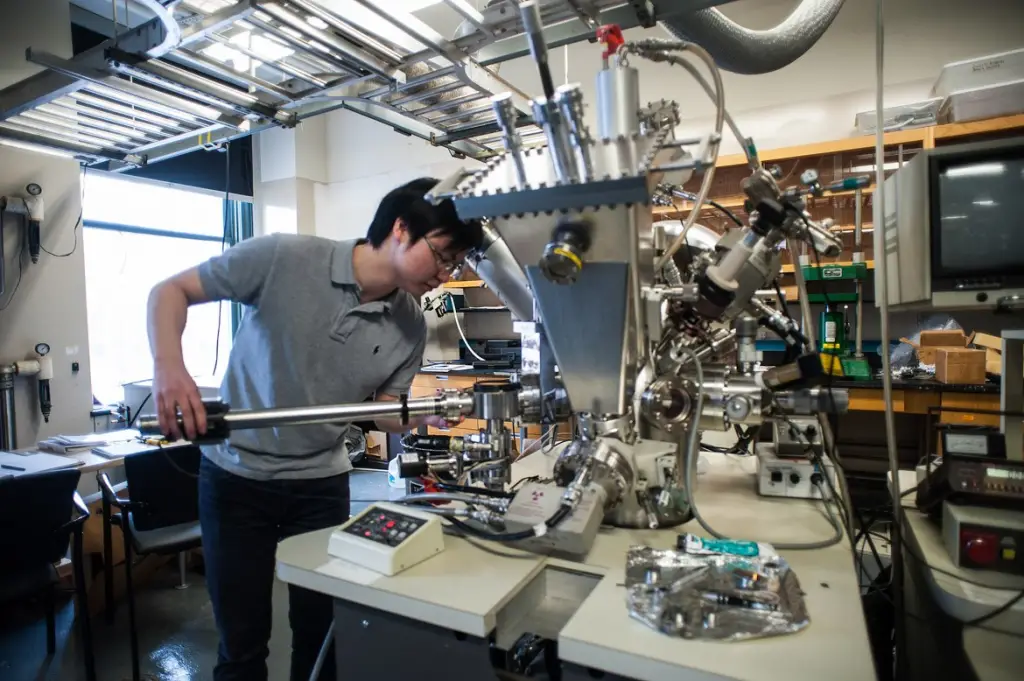
- Acceptance rate: 4.1%
- Average entry score: 1440-1570 SAT or 34-35 ACT
- Student-to-faculty ratio: 6:1
- Estimated cost of attendance (tuition and fees): $85,000
- Average earning potential for graduates: $39,400 (College Simply)
Columbia University offers 4 majors: biochemistry, environmental chemistry, chemical physics, and chemistry. Students looking forward to a career in the chemical industry can choose from one of these majors.
With a friendly and supportive environment, Columbia University makes chemistry majors feel at home. The university has a well-equipped chemistry research facility where students can conduct experiments and work on their own projects.
Columbia University’s large alumni network makes it easier for students to find job opportunities after graduation. Thanks to its high-quality education, friendly environment, and supportive staff members, Columbia University is one of the best universities for chemistry majors.
#4. Harvard University


- Acceptance rate: 4%
- Average entry score: 1460-1580 SAT or 33-35 ACT
- Student-to-faculty ratio: 7:1
- Estimated cost of attendance (tuition and fees): $76,963
- Average earning potential for graduates: $35,060 (Grad Reports)
Arguably, Harvard University is one of the best chemistry schools in the world. It has a long history of educating students from all over the globe. Harvard boasts some of the most innovative research in chemistry today.
The chemistry department at Harvard offers undergraduate and graduate degrees in the fields of chemistry, biochemistry, chemical engineering, and nanoscience.
As a result, students can choose a concentration that best fits their interests. Harvard students also take advantage of many opportunities outside of the classroom. For example, they can work with faculty members on research projects or attend lectures by visiting speakers.
What’s it like to study at Harvard University?
#3. Massachusetts Institute of Technology


- Acceptance rate: 4%
- Average entry score: 1570 SAT or 36 ACT
- Student-to-faculty ratio: 3:1
- Estimated cost of attendance (tuition and fees): $77,570
- Average earning potential for graduates: $63,921 (College Factual)
The Massachusetts Institute of Technology (MIT) offers the best chemistry program in the country. Their chemistry department is highly regarded for its research and teaching. MIT offers undergraduate and graduate degrees in chemistry to students of all backgrounds and interests.
The school is well-known for its hands-on approach to teaching and research. Students have access to world-class facilities, laboratories, and equipment that allow them to learn from some of the most accomplished chemists in the world.
MIT’s small class sizes promote an intimate learning environment that allows students to interact directly with their professors. The school has been known for its excellence in the field of chemistry.
What’s it like to study at MIT?
#2. Stanford University

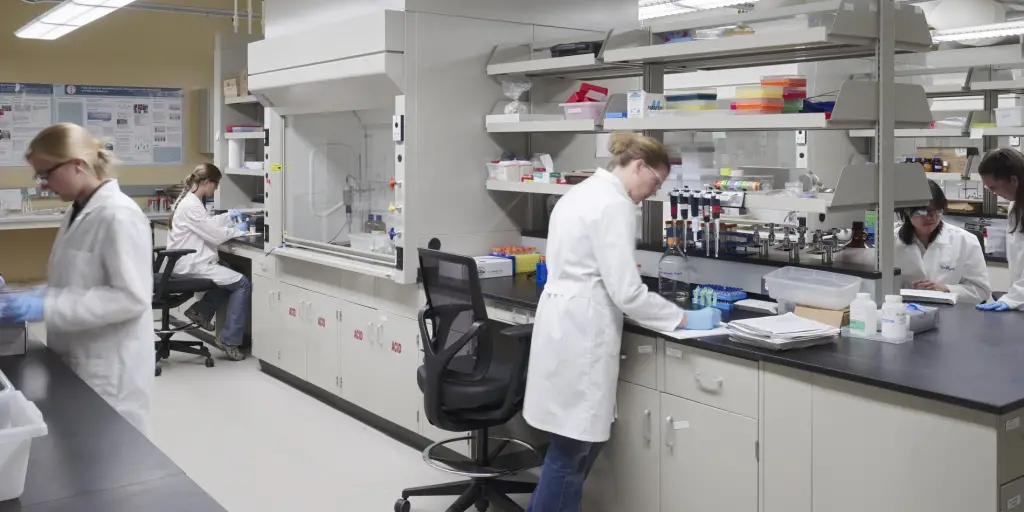
- Acceptance rate: 3.9%
- Average entry score: 1470-1570 SAT or 34-35 ACT
- Student-to-faculty ratio: 5:1
- Estimated cost of attendance (tuition and fees): $78,898
- Average earning potential for graduates: $112,000 (Grad Reports)
Stanford University is a popular option for students who want to earn a degree in chemistry. The school offers both undergraduate and graduate programs in the field. This institution has one of the most distinguished chemistry departments in the United States.
Its faculty members have won many awards for their work in the field and are among some of the best minds in chemistry today.
Students can work with the best minds in chemistry at Stanford University. The school has been ranked among the top universities in the country by U.S. News & World Report. Thanks to its state-of-the-art facilities, this university can provide students with a first-rate education.
What’s it like to study chemistry at Stanford University?
#1. California Institute of Technology


- Acceptance rate: 3.9%
- Average entry score: 1530-1560 SAT
- Student-to-faculty ratio: 3:1
- Estimated cost of attendance (tuition and fees): $83,598
- Average earning potential for graduates: $110,000 (Caltech)
Caltech’s chemistry department takes students through every aspect of the field, from organic synthesis to quantum chemistry. The school focuses on understanding the fundamental principles of chemistry and applying them to real-world problems.
Students in Caltech’s chemistry department will have access to world-class research facilities and faculty members who are experts in their fields.
With a chemistry degree from Caltech, students can expect to be well-prepared for a career in science or medicine. The school’s rigorous curriculum ensures that graduates have all the skills and knowledge they need to succeed in any field.
What’s it like to study chemistry at Caltech?
Conclusion
Chemistry schools in the US offer students a world-class education and opportunities to gain the skills and knowledge necessary to succeed in the field.
With a strong reputation, cutting-edge research, and a supportive community, these institutions are well-equipped to provide students with the resources and guidance they need to thrive.
If you’re passionate about chemistry and looking for a place to study, don’t hesitate to explore the many options available in the US. Hard work and dedication will help you to make the most of your education, leading to a successful career in this exciting and important field.
Selection Criteria
Here are the selection criteria for our list of the 25 best chemistry programs in the US:
- Reputation and ranking of the school: We looked for schools that have a strong reputation and high ranking in the chemistry field.
- Faculty expertise and specialization: We researched the faculty members and their areas of expertise to ensure that the school has professors with relevant expertise across the major areas of chemistry.
- Facilities, resources, and access to technology: Our team considered the quality of the school’s facilities and resources, such as labs, equipment, and libraries. We also considered the school’s access to the latest technology and equipment.
- Cost and financial aid: Our research team took into account the cost of attendance and the availability of financial aid options for students.
- Diversity and inclusivity: We considered the school’s diversity and inclusivity. A diverse and inclusive environment will enhance your educational experience.
- Graduation and placement rate: We looked at the school’s graduation and placement rate to see how well students fare after graduation.
- Extracurricular activities: Our team evaluated the availability of extracurricular activities and clubs that align with your interests.
- Alumni network and post-graduation support: We considered the school’s alumni network as this is important for mentorship, internships, and job opportunities after graduation. Our team also focused on the school’s post-graduation support services, such as career counseling and job placement.
Frequently Asked Questions
Q1. What are the top-ranked chemistry programs in the US?
Based on recent rankings, some of the top-ranked chemistry programs in the US include Harvard University, Stanford University, Caltech, and MIT.
These institutions are known for their world-class faculty, cutting-edge research, and comprehensive course offerings in a wide range of chemistry specialties. They also have strong reputations and attract top students from around the world.
Q2. Which universities have the best chemistry departments in the US?
Some universities with highly regarded chemistry departments in the US include Princeton University, the University of Chicago, the University of Illinois at Urbana-Champaign, the University of Michigan, and the University of Wisconsin-Madison.
These universities offer rigorous programs in chemistry, with a focus on both theoretical and practical knowledge. They also provide students with research and hands-on experience opportunities, working alongside experienced faculty and using state-of-the-art equipment.
Q3. What are the criteria for ranking chemistry programs in the US?
Criteria for ranking chemistry programs in the US can include the strength and reputation of the faculty, the quality of research produced by the department, funding levels, the diversity and competitiveness of course offerings, and the success of alumni.
Rankings may also consider the availability of resources and facilities, such as modern laboratories and equipment, as well as the overall academic reputation of the university.
Q4. How do the chemistry programs at Ivy League schools compare to other universities in the US?
Ivy League schools, such as Harvard and Princeton, are known for their strong chemistry departments. However, other universities, such as Caltech and UC Berkeley, can also have highly-ranked chemistry programs.
While Ivy League schools may have a strong reputation, they aren’t necessarily the best fit for every student. Many people find them too competitive and expensive.
If the cost of attendance at your first-choice institution is too high, you may want to consider a similar institution with a lower price tag.
Q5. How do the research opportunities at chemistry schools in the US compare to those in other countries?
Research opportunities at US chemistry schools are often considered among the best in the world. Thanks to well-funded departments and access to cutting-edge technology and resources.
Students who attend these programs have the opportunity to work on real-world problems and contribute to the advancement of the field.
References
[1] Official Websites
[2] Salary Data from Glass Door, College Factual, College Simply, Zippia, Gradreports
[3] Ranking references including news media such as Best Global Universities for Chemistry in the United States.


